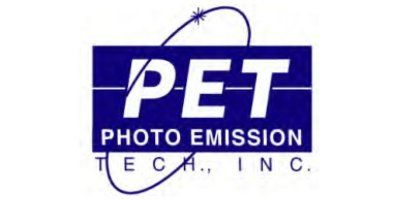

- Home
- Companies
- Photo Emission Tech., Inc. (PET)
- Articles
- Advanced system for calibration and ...
Advanced system for calibration and characterization of solar cells
This paper presents high performance setup developed at the SolarLab to measure curient-voltage (I—V) curves of solar cells. The core of a setup is a steady light solar simulator of class A, according to specifications oflEC 60904-9 andASTM E927 standards. Available range of measurements enables us to characterise not only all kinds of silicon wafer-based solar cells but also thin film cells and minimodules. A lot of effort has been done to make a setup as a powerful tool for advanced research work. For that purpose, such options have been implemented as various algorithms for I-V curve translation to external conditions other than those recorded during measurement or several techniques to determine lumped series resistance of solar cells (in both cases procedures recommended by IEC 60891 standard have been included). Advanced numerical fitting algorithms allow to extract from I—V curves the parameters corresponding to either of three commonly used equivalent diode models of a solar cell.
Using an independent microprocessor unit, the temperature of the measuring table may be controlled in the range 0-60 °C due to a system of four Peltier cells attached to its rear side. This allows for routine determination of thermal coefficients of basic cell parameters.
The paper discusses also some of elemental random and nonrandom error soun:es that can be encountered during the standard I-V measurements of a solar cell. The test results of repeatability of measurements, problems related to pwbe configuration, and heating up of the cells during "light" measurements are presented showing that the developed system can be successfully used both for laboratory work and as a tester on a production line. The system meets all requirements of the IEC 60904-1, IEC 60904-3, and IEC 60904-9 standards.
Introduction
Characterisation of solar cells is an equally important task both on a production line during manufacturing process as well as during research work in a laboratory. However, there may be quite different requirements concerning either accuracy and/or speed of the measurements. And so, during on-line tests high accuracy may not be of the primary importance yet the measurement rate and repeatability usually remain critical if one takes into account typical production throughput usually well exceeding 1(K)() cells/hour. Contrary to that, in a course of research work, high accuracy and good control and repeatability of the measurement conditions rather than speed may be crucial for proper recognition and analysis of the physical features of the characterised device. The speed of measurement is significant as far as it may affect the final result of test itself, e.g., due to a change of temperature or finite photo-current response time of the device.
At the SolarLab, effort has been done to develop a system for characterisation of the solar cells in, so-called, standard test conditions (so-called STC, i.e., light spectrum AMI .5G, normalised to 1000 W/m2 and 25°C cell temperature) in accordance with the requirements of IEC 60904-1 [1] and IEC 60904-3 [2] standards and with variety of options implemented that may be helpful in advanced research work. Other aim was to combine high accuracy of the measurement with repeatability and speed that would make the setup suitable for cell manufacturing as well. Many of tests have been performed on the setup to recognise and present possible random or nonrandom sources of errors that can be encountered during standard I-V curve scans.
